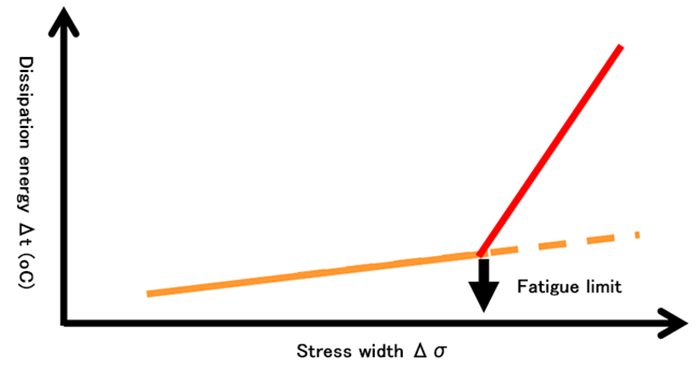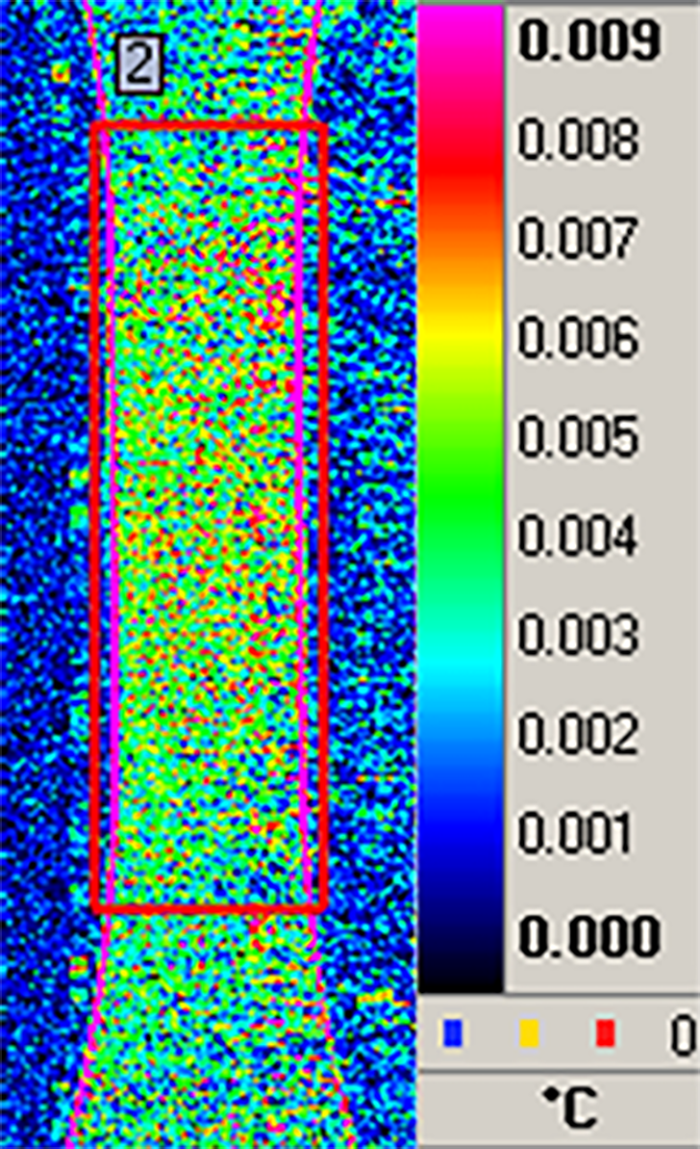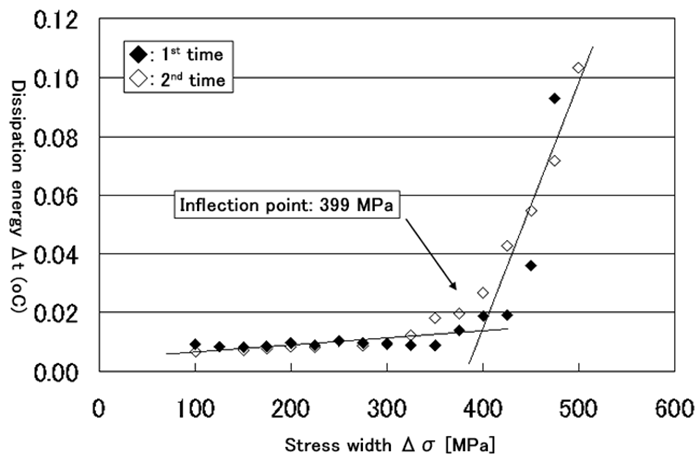Thermography (Infrared Camera Application Technology)
Fatigue Analysis with Thermography (Infrared Camera)
The fatigue limit can be quickly determined by measuring the dissipation energy with an infrared camera.
The advantage of estimating the fatigue limit by measuring the dissipation energy with an infrared camera is speed.
Normally, the fatigue limit is estimated in about one to four weeks using an ordinary fatigue test; however, it is possible to estimate the fatigue limit within approximately one-half to two days with the energy dissipation method and an infrared camera.
The new method offers the advantages of saving time and costs for screening in the development and design stages when examining different materials and shapes.

Estimation of Fatigue Limit with Dissipation Energy
Fatigue failure may occur after applying a load to the metal components repeatedly over a prolonged period of time.
If the cyclic load is small, only reversible temperature variations may occur due to the thermo-elastic effect. If the cyclic load is increased, non-reversible heat may be generated and cause large temperature increases (dissipation energy).
This phenomenon is the result of micro slips (dislocation) or cracks. The phenomena increases dramatically near the fatigue limit. (Fig. 1)
A method seeking this inflection point is the estimation of the fatigue limit using an infrared camera. This method has the advantage that the location of fatigue can be identified in a short period.

Example of Estimation of Fatigue Limit
Fig. 2 is an example of dissipation energy measurement for a tensile test piece.
From Fig. 2, the fatigue limit of the measured test piece is estimated as 399 MPa. The fatigue limit estimated with the fatigue test for the same material (SN curve) is 412.5 MPa. The results are almost identical.




